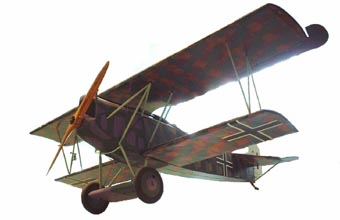
No 80 Squadron
1917-18![]()
No 80 Squadron RAF
The final push, August - November 1918
|
Lt. Victor Yeates, who later wrote the novel Winged Victory, was posted to 80 Sqn on 9 August from 46 Sqn and joined B Flight. He appears to have been flying as a pair with Lt. Orr that day and to have witnessed Orr's death after both had been attacking troops in Bray. He comments in the book about this period as follows: "It had been impossible lately with all the casualties to have days off; to take a lot of raw pilots among the Fokkers would be murder; the experienced men had to stick to it. The squadron would have to be rested soon or go back north, else the experienced men would be dead or gibbering. Yet they had only been ten days on the Somme front. The horrors of ground-strafing, of continually fighting machines by which they were altogether outclassed, had made this time as wearing a time as the previous three months." Reference to Fokkers was to the new much improved DVII which could easily outperform the Camel. Yeates left the Squadron on 31 August after the move to a new airfield at Allonville. In later life Reginald Preeston (of 80 Sqn) expressed the view that Winged Victory was about as accurate as it was possible to be in describing life in WW1 and he could not do better. |

Fokker DVII
One of the new pilots, referred to by Victor Yeates (above), a 2nd Lt. G Smith, was killed in a flying accident on 15 August when practicing diving on the airfield, he crashed in mid air into an AW FK8, killing the observer and injuring the pilot. This incident is partially recorded in Winged Victory.
In the second half of August Lt. Brindley died of wounds and Lt.s Phear and Chadwick were wounded, all from ground fire. Lt. Tupman was killed on 22 August shot down by Ernst Udet, CO of Jasta 4.
The Squadron was very active in September. Capt. Whistler claimed a balloon destroyed and two Fokkers shot down. Lt. Welch forced down a balloon and shot down two Fokkers before being killed in action. Lt.s McGill, Fairburn, Walker and Bramwell were also killed in action and Lt. Thatcher taken prisoner.
Capt. Preeston was transferred from 80 Sqn on 23 September to serve with the French forces. Capt. Welch took over as Flight Commander but was killed on 29 September. Capt. Freehill joined in October as a replacement Flight Commander.
Battle for the Hindenburg line
80 Sqn was part of the air support for the Fourth Army when the assault on the Hindenburg line was launched on 29 September. The squadron being assigned both ground attack and medium height offensive patrols (to protect corps and other low flying aircraft).
Lt.s Thompson, Winthrop-Andrews and Whitman were killed in the first days of October and Lt.s Jennings and Judkins taken prisoner. Capt. Whistler continued his success claiming two Fokkers and a Halberstadt, Capt. Freehill and Lt. Messenger each claimed a Fokker.
The final major engagements between 80 Sqn and hostile aircraft were on 4 November over the Forêt de Mormal when four 80 Sqn aircraft were shot up and one was lost with Lt. Grant later confirmed killed in action.
Further detail:
No 80 Sqn RAF airfields in France 1918
No 80 Sqn RAF Personnel alphabetical
|
Sources: "Strike true: the story of No 80 Squadron Royal Air Force" by Christopher Shores; "RAF Communiqués 1918" edited by Christopher Cole; "The Sky their Battlefield" by Trevor Henshaw "The War in the Air" Vol 6 by H A Jones "Airmen died in the Great War 1914-18 Roll of Honour" (ROH) by Chris Hobson; CWGC website "Above the War Fronts"(ATT) by Franks, Guest & Alegi; "Canadian Airmen and the First World War" by S F Wise. Captain Reginald Preeston's reminiscences recorded by his family |
Photo copyright © 2004 www.airwar1.org.uk
www.airwar1.org.uk